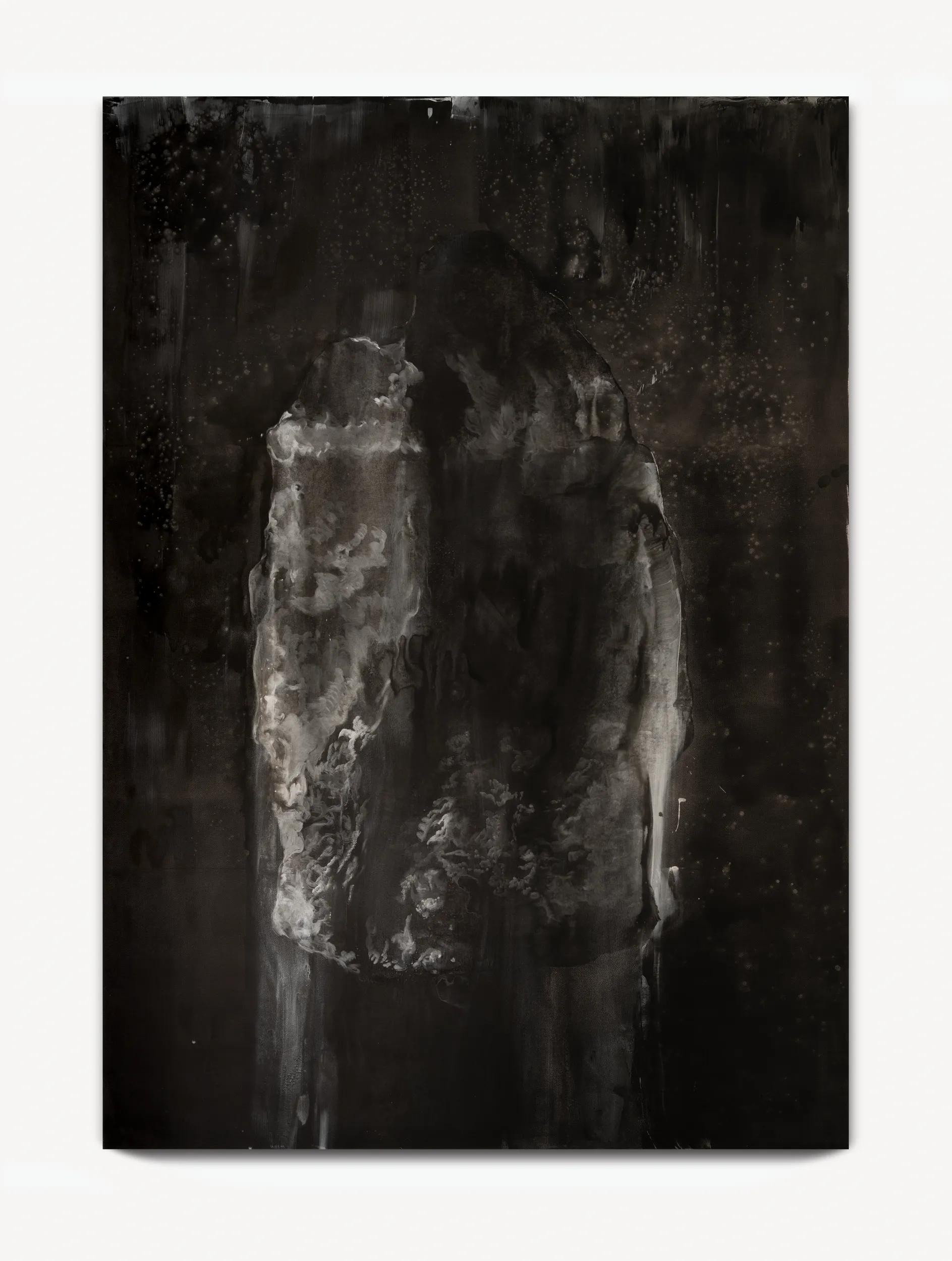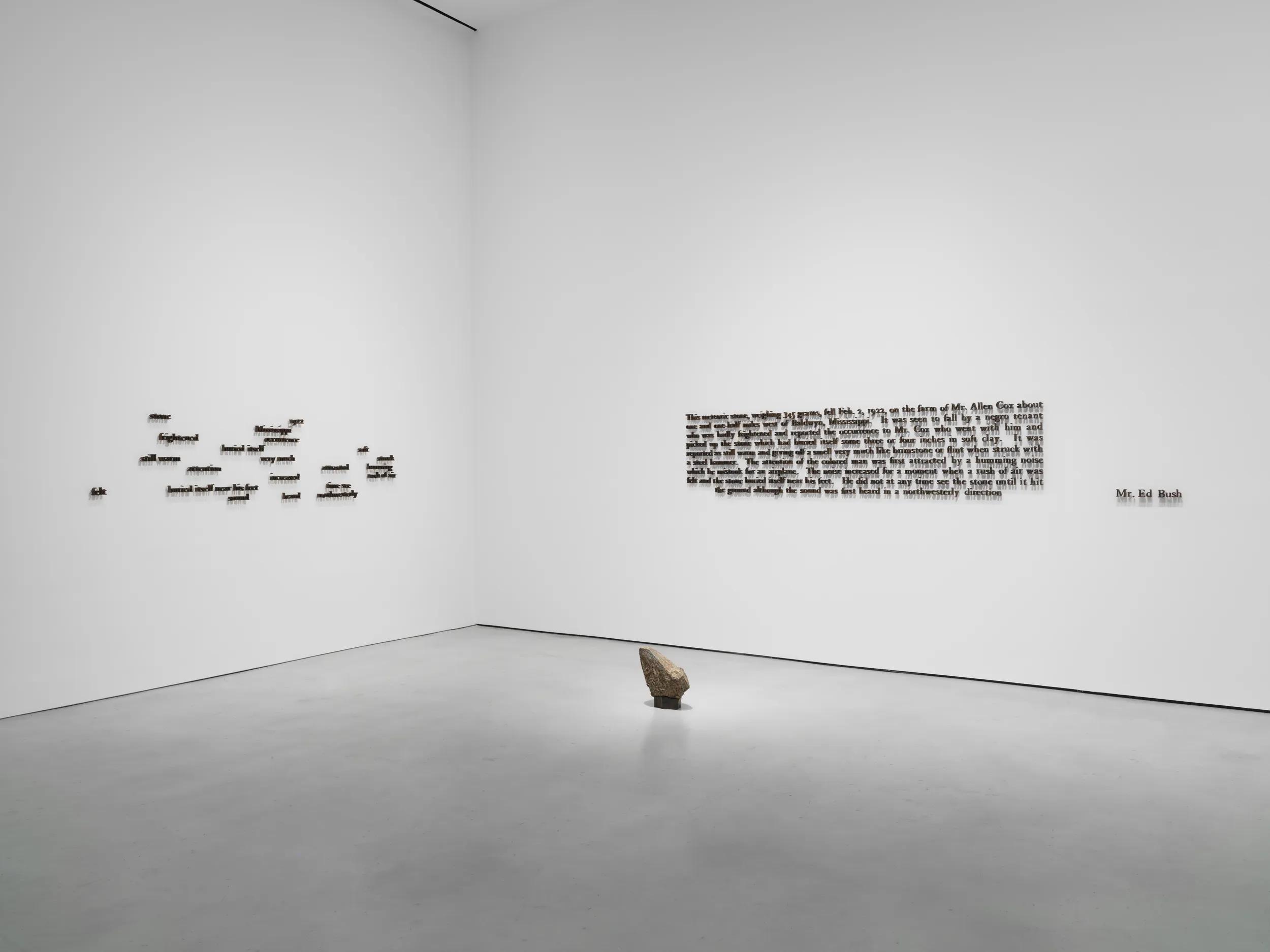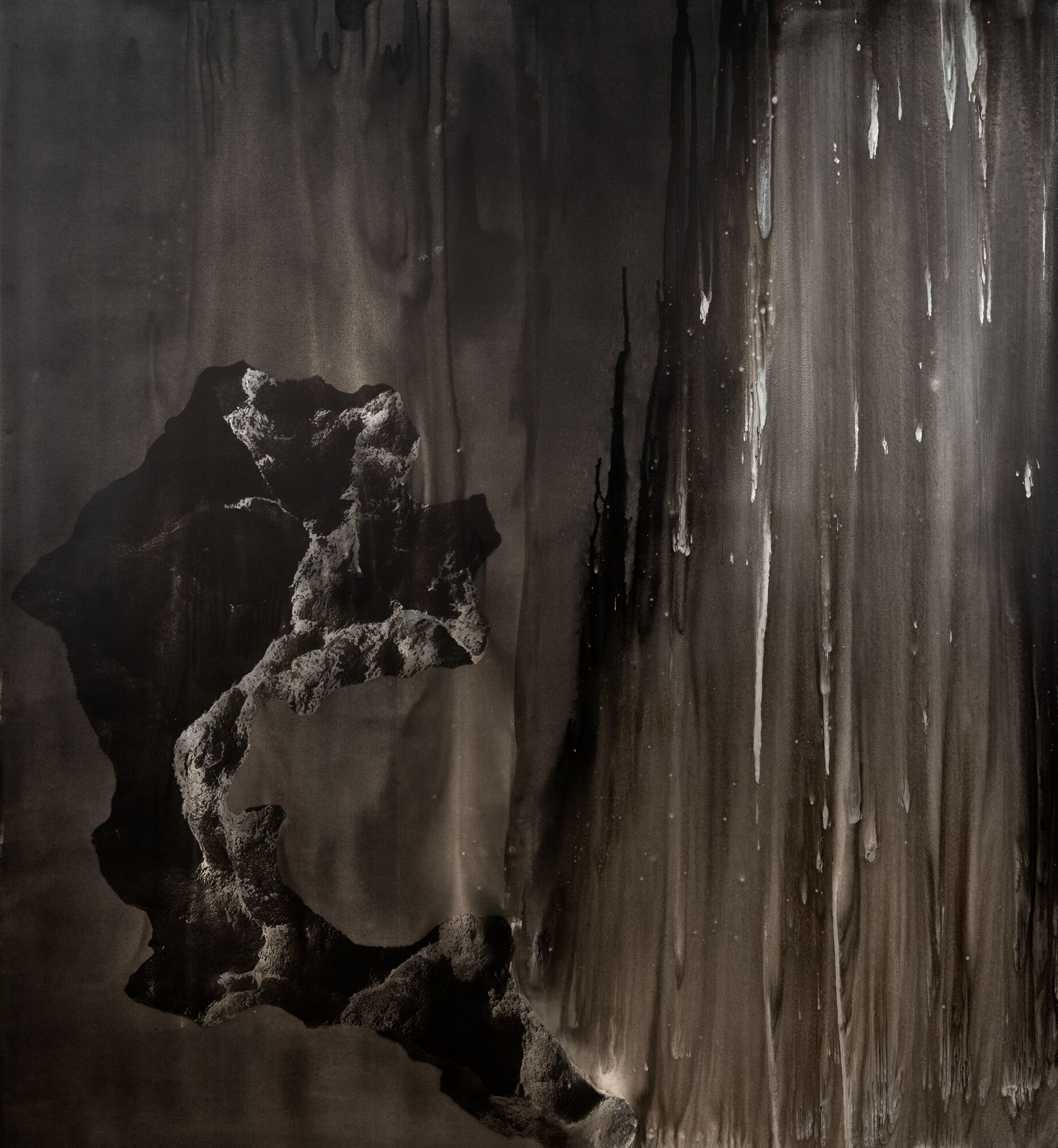
With ‘Earth & Sky,’ Lorna Simpson debuts a new body of work exploring our relationships—physical and metaphysical—to unseen forces that work upon us individually and generationally, alternately challenging and empowering our sense of our own humanity. The exhibition encompasses a series of massive paintings inspired by a 1929 textbook ‘Minerals from Earth and Sky,’ along with a pair of monumental paintings depicting the impact of fired bullets.
With their monochromatic palette of iridescent paint in silvery greys and saturated blacks, Simpson’s paintings invite the viewer to contemplate both the beauty of natural forces and the impact of violence that materialize from sources unseen, whether interstellar objects hurtling towards Earth or lethal bullets dispatched from weapons.
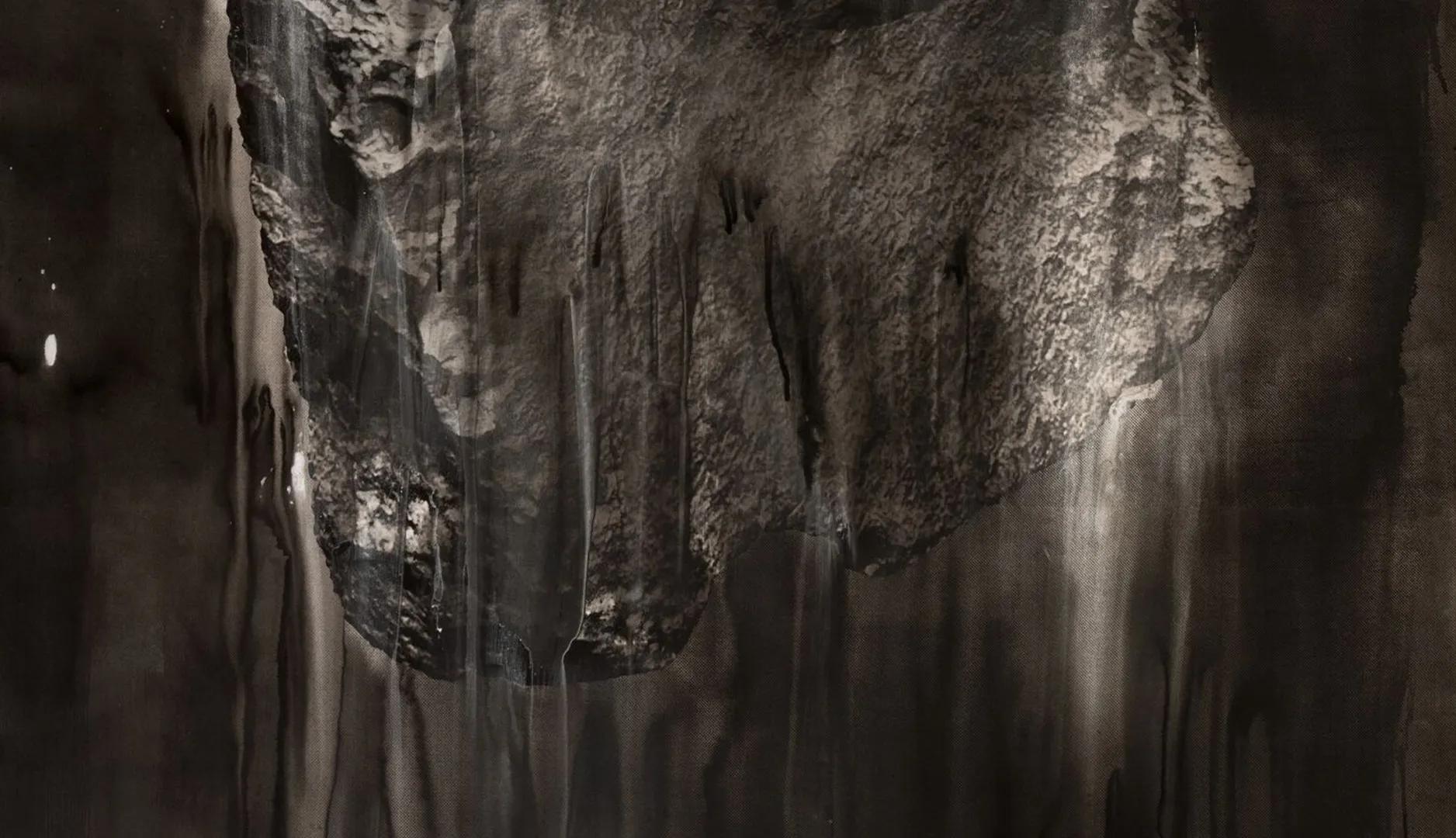
The ancient sculptural forms and shimmering textures of the space rocks take on the aspect of ominous abstract sculptures crafted by time and velocity, while silk-screened bullet holes are alchemically transformed into compositions which from a distance resemble benevolent constellations of stars. Together, Simpson’s incandescent paintings draw attention to the danger hidden in beauty and, conversely, the beauty hidden in danger. Bringing us face to face with phenomena rarely witnessed by the human eye, they ask us to locate ourselves in the context of the cosmos.

Haze
2024
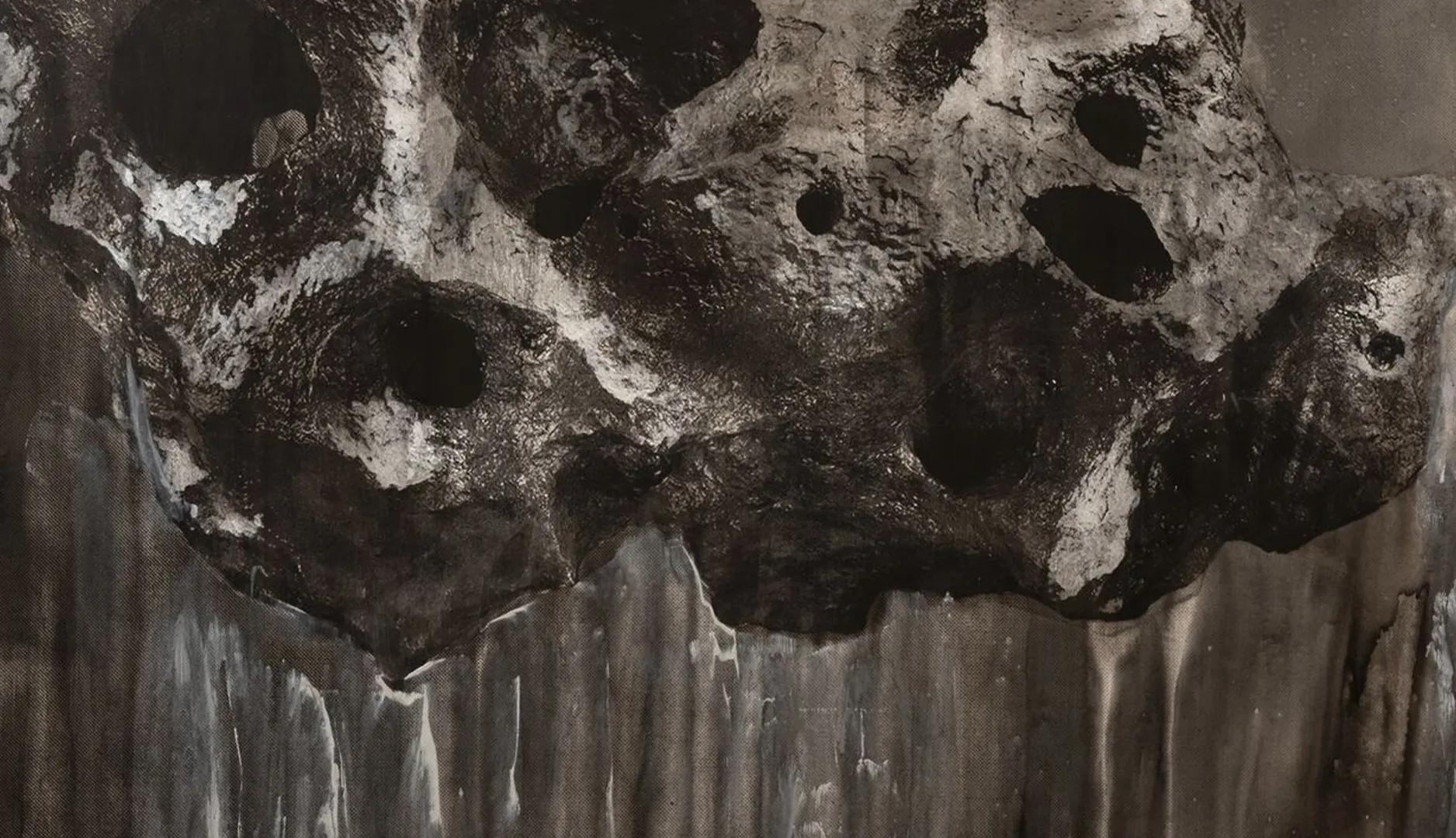
Presented in a temple-like atmosphere in which both human scale and geological time are upended, Simpson’s works are accompanied by a new text-based wall sculpture referencing a story recounted in the same textbook, describing the astonishment of an unnamed Black sharecropper when a meteorite falls from the sky and lands at his feet, still warm to the touch from its dark flight.

did time elapse
2024
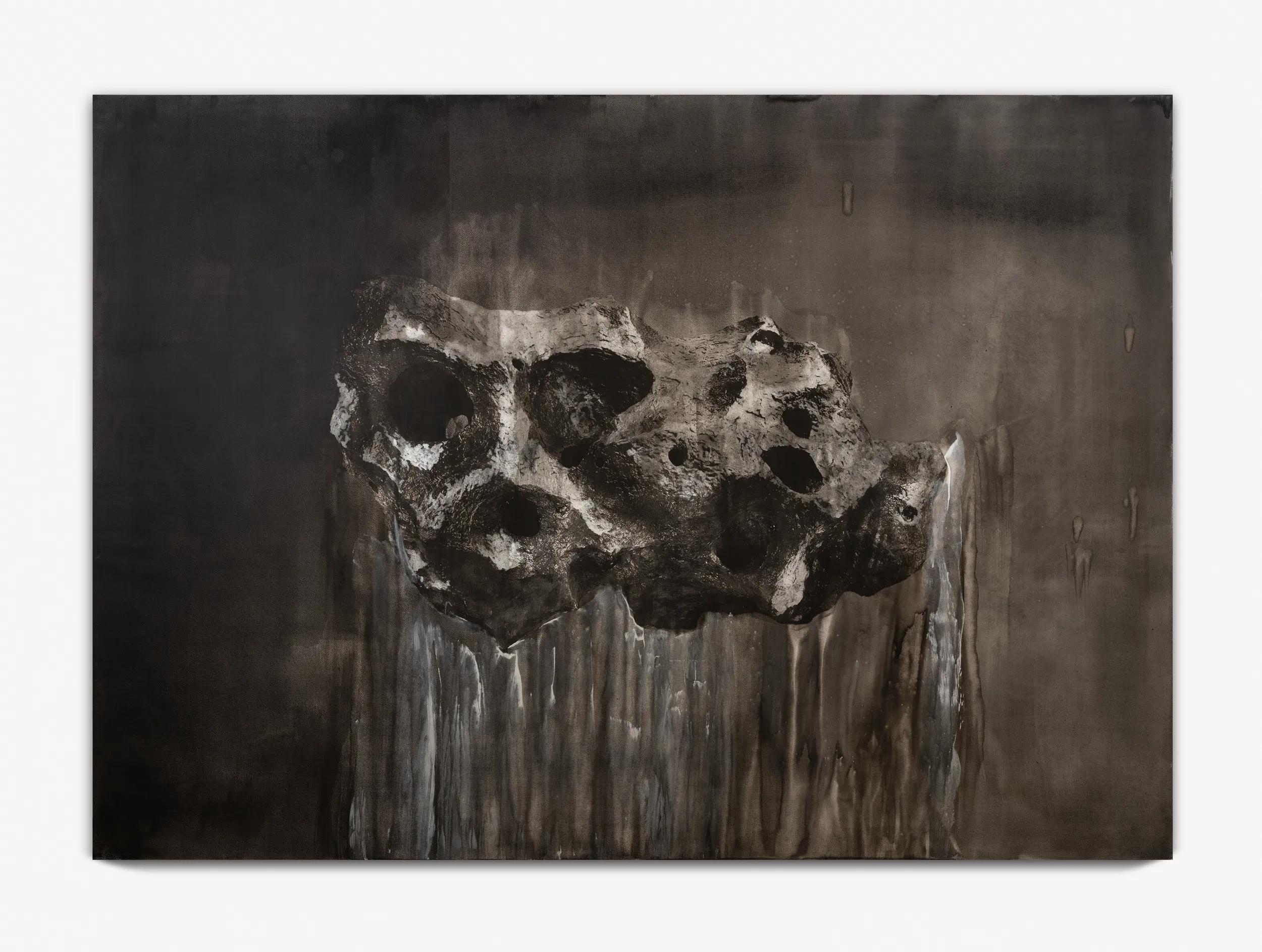
Fall reported
2024
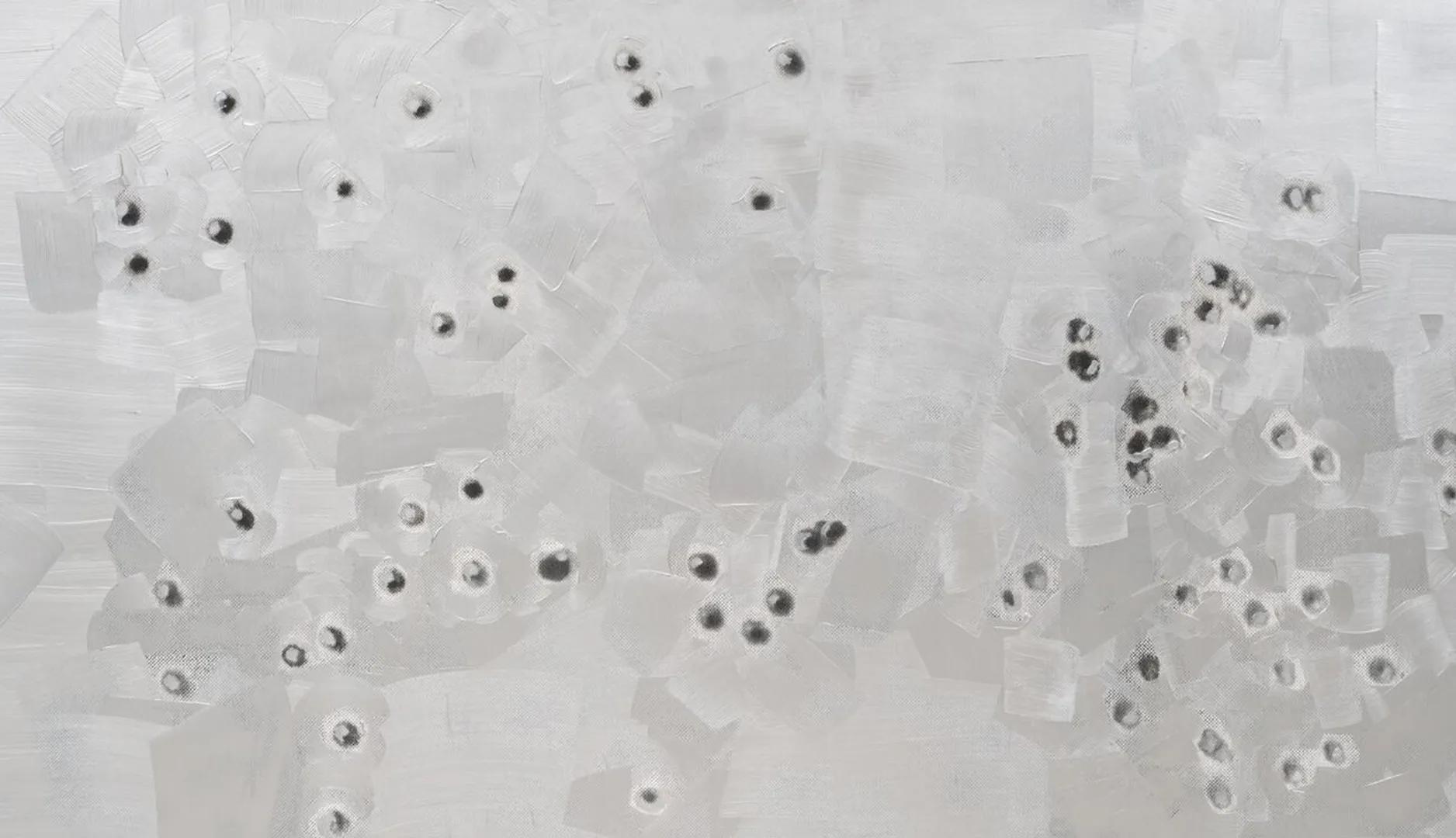
Simpson’s text-based wall sculpture ‘Earth & Sky’ conceptually connects her meteorite and bullet hole paintings while evoking many of the artist’s early celebrated text-and-image works, and further elaborating on the themes of identity, representation and authorship that have long defined her oeuvre. On perpendicular walls, two versions of an excerpt from the aforementioned historical textbook mirror one another, their pin-mounted letters casting fugitive shadows.
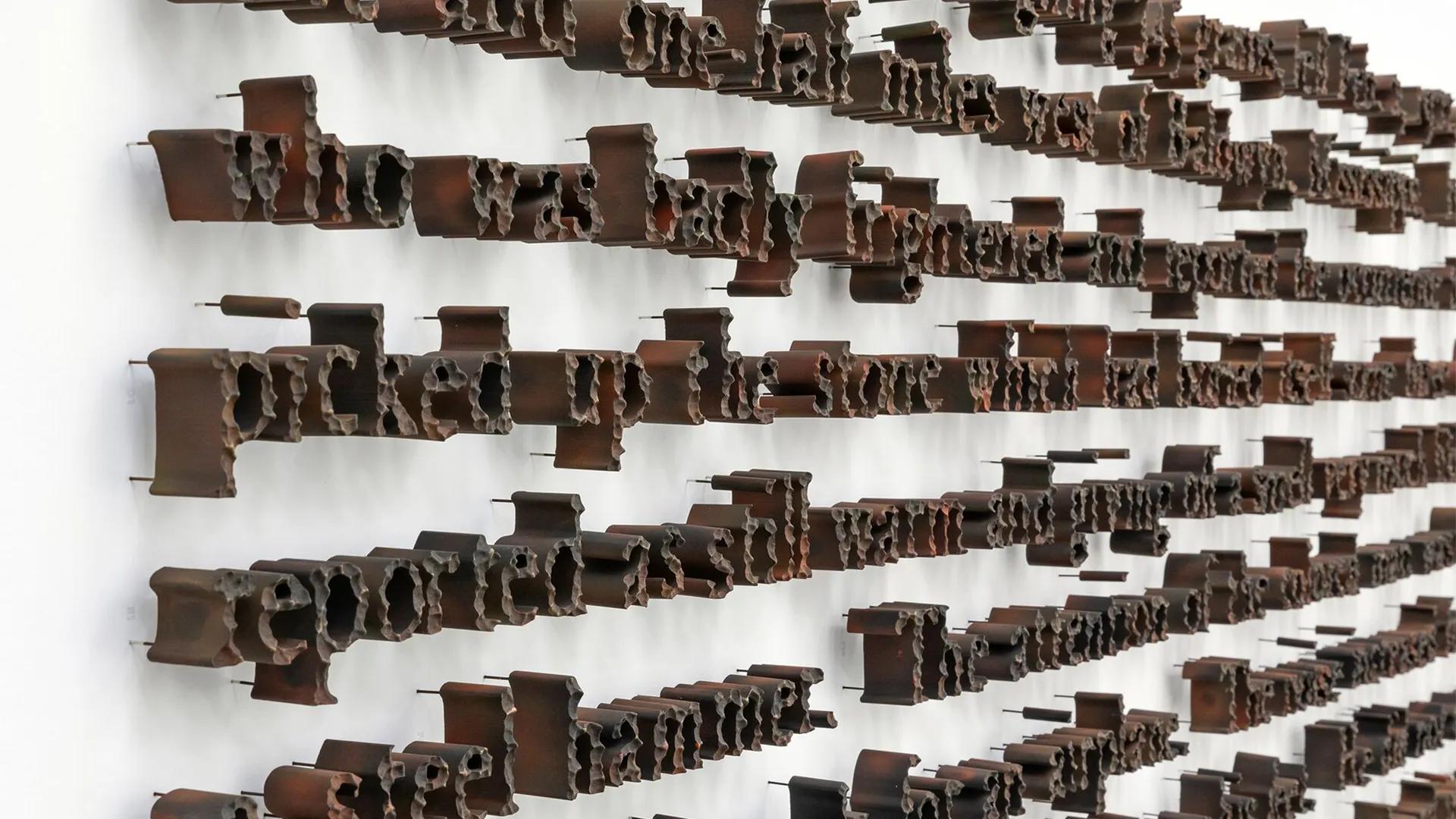
Here Simpson shares the story of the meteorite and the Black tenant farmer in Mississippi who found it—a man unnamed in the original volume but revealed by the artist’s own recent research to have been called Ed Bush. By removing and replacing several key words in the sentences, Simpson succeeds in reorganizing meaning across time, bringing a new dimension to the way we receive and value a human story.
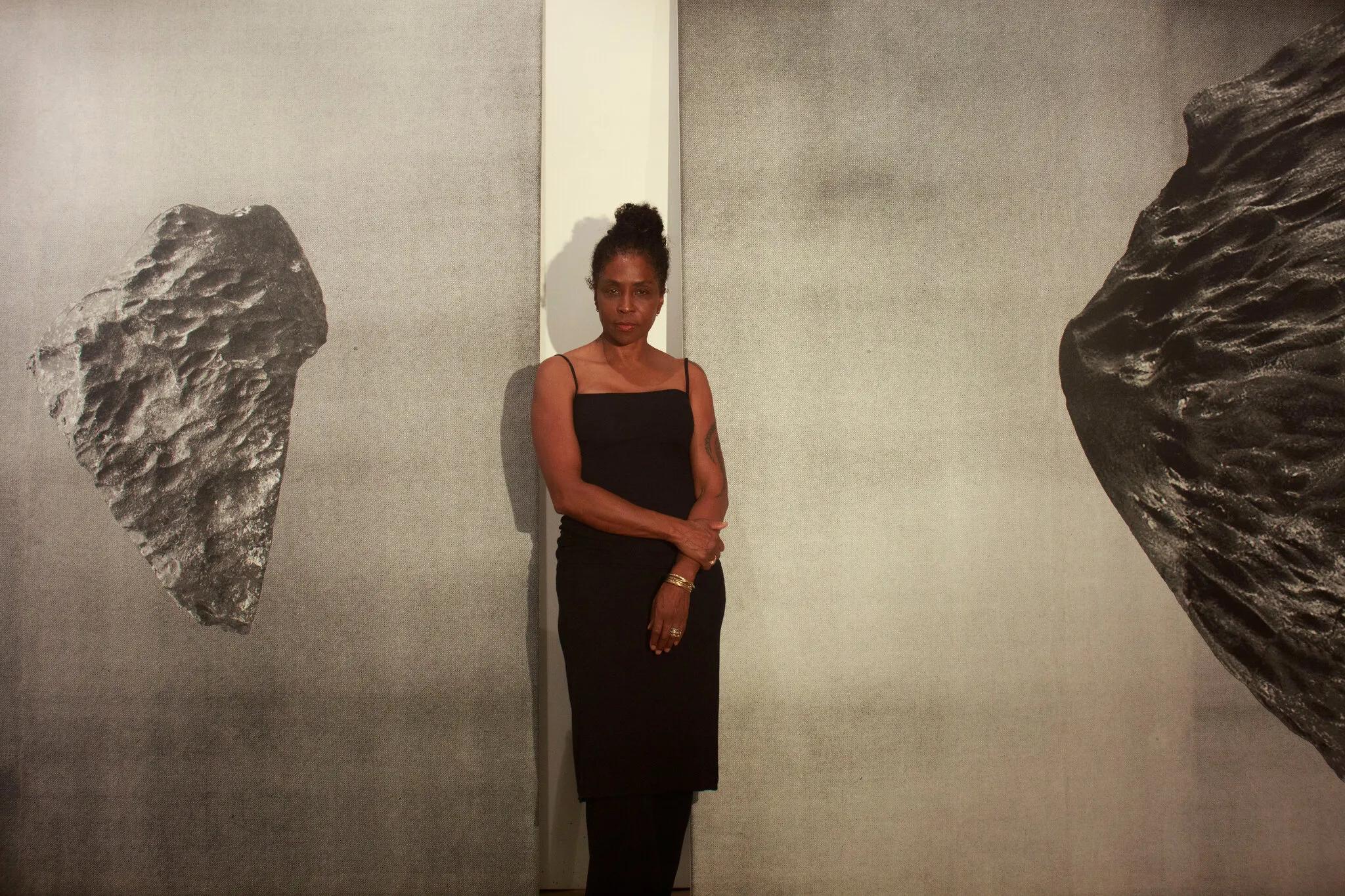
Lorna Simpson for T Mag's The Greats
‘I need to be uncertain. It makes me more curious and pushes the boundaries of what quote-unquote makes sense. And I’ve just noticed when [it does start making sense], you’ve got to stop. Do something else.’ — Lorna Simpson
Photo: Ming Smith
About the Artist

Lorna Simpson
Born in Brooklyn, Lorna Simpson came to prominence in the 1990s with her pioneering approach to conceptual photography. Simpson’s early work—particularly her striking juxtapositions of text and staged images—raised questions about the nature of representation, identity, gender, race and history that continue to drive the artist’s expanding and multi-disciplinary practice today. She deftly explores the medium’s umbilical relation to memory and history, both central themes within her work.
Studying on the West Coast in the mid-1980s, Simpson was part of a generation of artists who utilized conceptual approaches to undermine the credibility and apparent neutrality of language and images. Her most iconic works from this period depict African-American figures as seen only from behind or in fragments. Photographed in a neutral studio space, the figures are tied neither to a specific place nor time. Drawing upon a long-standing interest in poetry and literature, the artist accompanies these images with her own fragmented text, which is at times infused with the suggestion of violence or trauma. The incredibly powerful works entangle viewers into an equivocal web of meaning, with what is unseen and left unsaid as important as that which the artist does disclose. Seemingly straightforward, these works are in fact near-enigmas, as complex as the subject matter they take on.
Over the past 30 years, Simpson has continued to probe these questions while expanding her practice to encompass various media including film and video, painting, drawing and sculpture. Her recent works incorporate appropriated imagery from vintage Jet and Ebony magazines, found photo booth images, and discarded Associated Press photos of natural elements—particularly ice, a motif that appears in her sculptural work in the form of glistening ‘ice’ blocks made of glass. The new work continues to immerse viewers in layers of bewitching paradoxes, threading dichotomies of figuration and abstraction, past and present, destruction and creation, and male and female. Layered and multivalent, Simpson’s practice deploys metaphor, metonymy, and formal prowess to offer a potent response to American life today.
Current Exhibitions
1 / 12

